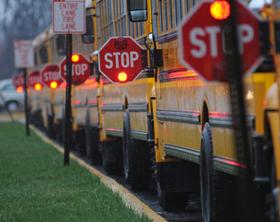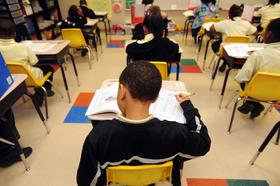As deadlines for No Child Left Behind program began to press on schools nationwide, many states have realized that they would simply be unable to make the standards set by the federal legislation in the time frame allotted. As a result, President Barack Obama has granted waivers to 10 states that requested them, allowing them to free themselves from the sweeping requirements of NCLB. In exchange, these states have pledged to continue their work on academic improvement, both in terms of student performance and evaluation.
Why Waivers Were Necessary
No Child Left Behind was the highly touted and bipartisan legislation signed into law by President George W. Bush. The purpose of the law was to ensure every student in the country was proficient in math and reading by 2014, including traditionally underserved students like those from low-income areas, minorities, students with disabilities and kids still learning the English language.
However, many have complained that the federal system of accountability did not allow states sufficient flexibility in developing systems that worked for their kids, and that it encouraged teachers to simply “teach to the test.” Many states are also showing signs already that they will be unable to meet the federal guidelines in a timely fashion, which has prompted the request for waivers in many states. President Obama recently called No Child Left Behind “an admirable but flawed effort that hurt students instead of helping them,” at CBS News.
By providing waivers to some states, the President has provided the flexibility states need to tailor their educational practices and evaluation methods to the unique needs of their students. They also ensure states will continue to receive federal funding to provide resources and assistance to the school districts that need it most, even if their standardized test scores are not quite up to par. The President explained that waivers were necessary because Congress had been unable to come up with an agreeable plan to re-write the law since it was up for renewal.
The Responsibility of the States
The Christian Science Monitor lists the states receiving waivers thus far as Colorado, Florida, Georgia, Indiana, Kentucky, Massachusetts, Minnesota, New Jersey, Oklahoma and Tennessee. An 11th state, New Mexico, has also requested a waiver, but is still working with the administration to get approval. The Monitor also reports that 28 additional states, the District of Columbia and Puerto Rico have voiced their intentions to apply for waivers later this month.
In exchange for a waiver, the state must agree to create plans to prepare students for college and careers by setting new targets for improving achievement, rewarding schools with the best performance and assisting schools that continue to struggle, according to the Salt Lake Tribune. Students will continue to be tested annually, but schools will no longer be subjected to the punitive actions of NCB.
Colorado submitted a request for a waiver last November and expected the administration to come back with a number of changes before the state would have their request granted. However, the Denver Post reports that the plan waiver was approved almost exactly as it had been originally submitted. Colorado officials believe that indicates an informal “stamp of approval” on the reforms that had already been in the works throughout the state. Education Secretary Arne Duncan also told the Denver Post, “Colorado did a fantastic job and in so many ways is helping shape the national dialogue.”
President Obama stated that every state can receive a similar deal as long as they show an alternative plan that will properly educate and evaluate the children in that state.
“We’ve offered every state the same deal,” Obama was reported saying in the Tribune. “If you’re willing to set higher, more honest standards than the ones that were set by No Child Left Behind, then we’re going to give you the flexibility to meet those standards.”
Many educators and lawmakers are applauding President Obama’s efforts to offer states options to No Child Left Behind.
“With the waivers, Obama has changed the landscape of accountability under No Child Left Behind,” Diane Stark Rentner, interim director of the Center on Education Policy in Washington D.C., told the Christian Science Monitor.
Cynthia Brown, vice president for education policy at the Center for American Progress in Washington D.C., told the Monitor that the NCLB deadline was a “wonderful goal, but really impossible to attain with an education system that is structured the way it is. We’ve had so much reform momentum throughout the country over the last five or six years that it’s really important to adapt the law to…the willingness of states and districts to take on new ways of doing things.”
Overstepping Boundaries?
While many are hailing President Obama’s decision to grant waivers as a much-needed solution to many of the problems associated with No Child Left Behind, not everyone is happy about the President granting waivers, or the way he did it – without congressional approval.
“NCLB, for all its flaws, was crafted by the U.S. Congress,” Frederick Hess, director of education policy studies at the American Enterprise Institute in Washington, told the Christian Science Monitor. “[But] these waivers impose a raft of new federal requirements that were never endorsed by the legislative branch. Once this administration opens the door, it’s hard to imaging future administrations not building on this precedent.”
Rep. John Kline of Minnesota agreed with Hess. He was reported by the Monitor as saying, “This notion that congress is sort of an impediment to be bypassed, I find very, very troubling in many, many ways.”
Duncan told CBS News that the administration still “desperately” wants Congress to fix the NCLB law. In the interim, we shall hope that the waivers can help states get their education system back on the track of effectively helping their students truly learn.


































































































































































































